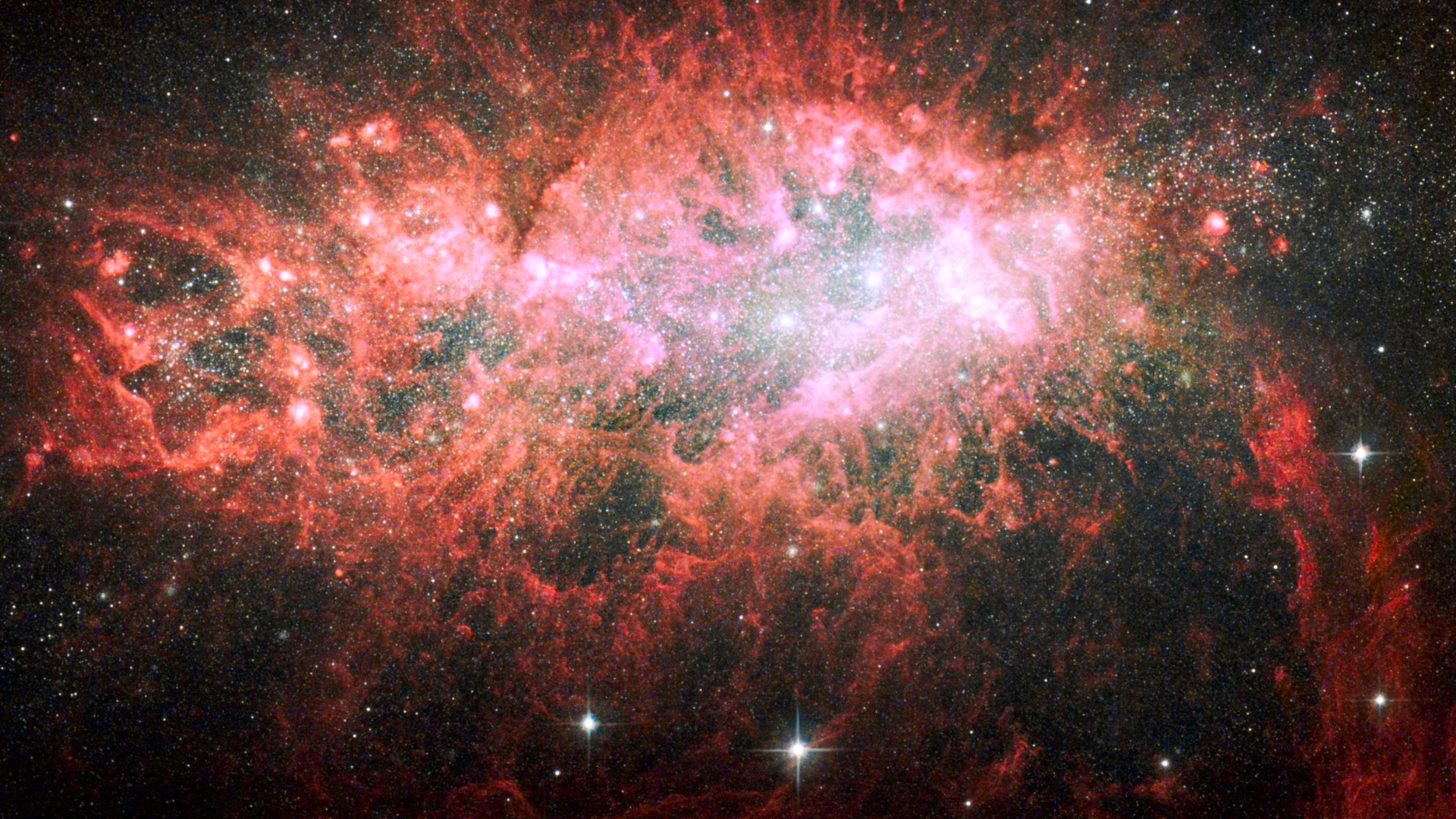Supercharged 'cocoon of energy' may power the brightest supernovas in the universe
Every so often, astronomers detect a supernova explosion that's 100 times brighter than it should be. A new paper may reveal the strange source of these "superluminous" supernovas.

Physicists have described how the brightest stellar explosions in the universe might be powered.
These "superluminous supernovas" are 10 to 100 times brighter than a typical supernova. While their origins remain largely mysterious, they are powered by a supercharged cocoon of energy that can release an enormous amount of radiation for days at a time, the new study proposes.
Because superluminous supernovas are incredibly rare, researchers have a difficult time agreeing on their causes. The leading hypothesis, however, is that these supernova blasts are powered by the deaths of stars that are at least 40 times bigger than the sun. When they die, they form a neutron star or black hole at their cores. Once these incredibly dense objects form, the material closest to them starts to swirl in, creating a rapidly rotating disk contained within the body of the star.
This disk can fuel the formation of incredibly strong electric and magnetic fields. The magnetic fields funnel gas around the central black hole or neutron star and then send it up and out in the form of jets. This scenario provides the right energetic punch to power a superluminous supernova, but how the process unfolds after that has been a mystery.
Recently, two astrophysicists put together a story of what happens to the dying star over the next few days. They used computer simulations and mathematical models to track the progress of the jet as it impacted the rest of the star. They described their model in a paper published in the preprint database arXiv in July.
The team found that the jet forms a small cavity inside the star and that the cocoon expands outward, picking up material at its edges. The cocoon's edge is where the real action takes place. This edge emits enormous amounts of radiation for several days. Eventually, however, the jet inside the cocoon overwhelms it and breaks it apart, leading to the eventual destruction of the star itself.
The models suggest that the supernovas can shine at their peak brightness for days, or even weeks, before the explosion finally loses energy — which matches with observations.
Get the Space.com Newsletter
Breaking space news, the latest updates on rocket launches, skywatching events and more!
This scenario is only a hypothesis, but the researchers believe that future observations of superluminous supernovas will validate the general picture, especially if there is an observed increase in X-ray brightness paired with a fast-moving shell of material detaching from the star, the authors wrote in the paper.
Join our Space Forums to keep talking space on the latest missions, night sky and more! And if you have a news tip, correction or comment, let us know at: community@space.com.

Paul M. Sutter is an astrophysicist at SUNY Stony Brook and the Flatiron Institute in New York City. Paul received his PhD in Physics from the University of Illinois at Urbana-Champaign in 2011, and spent three years at the Paris Institute of Astrophysics, followed by a research fellowship in Trieste, Italy, His research focuses on many diverse topics, from the emptiest regions of the universe to the earliest moments of the Big Bang to the hunt for the first stars. As an "Agent to the Stars," Paul has passionately engaged the public in science outreach for several years. He is the host of the popular "Ask a Spaceman!" podcast, author of "Your Place in the Universe" and "How to Die in Space" and he frequently appears on TV — including on The Weather Channel, for which he serves as Official Space Specialist.











